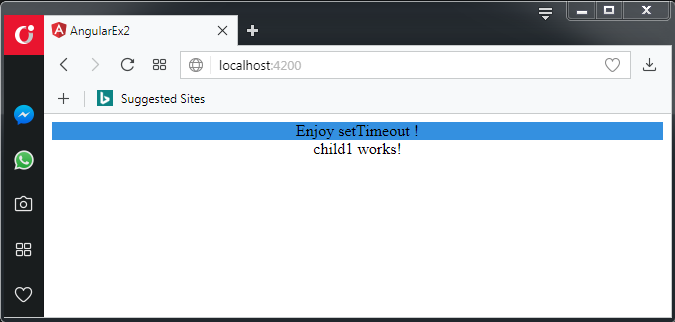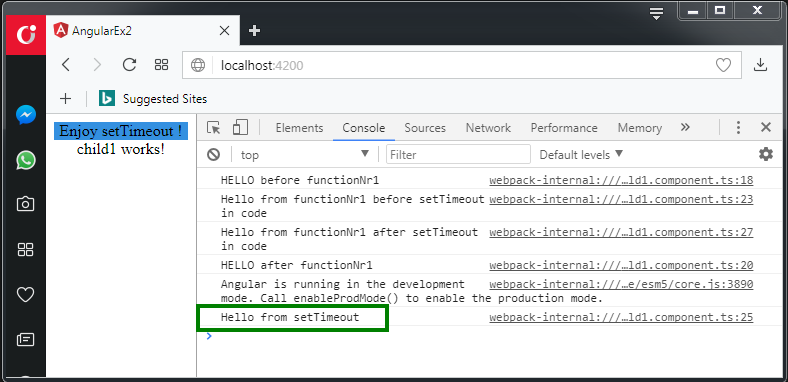#
Angular setTimeout() example
This tutorial explains to you how you can use setTimeout functionality in angular 4. You will have a nice example as well.
For this example I have used the code generated at the article named Create a Child Component in Angular.
I have modified the following files:
app.component.html
<!--This is app.component.html file -->
<div style="text-align:center">
<div class="myclass">
</div>
<app-child1></app-child1>
</div>app.component.ts
/* This is app.component.ts file */
import { Component } from '@angular/core';
@Component({
selector: 'app-root',
templateUrl: './app.component.html',
styleUrls: ['./app.component.css']
})
export class AppComponent {
message: string = 'Enjoy setTimeout !';
}app.component.css
/* This is app.component.css file */
.myclass {
background-color: rgb(52, 144, 224);
}child1.component.ts
/* This is child1.component.ts file */
import { Component, OnInit } from '@angular/core';
@Component({
selector: 'app-child1',
templateUrl: './child1.component.html',
styleUrls: ['./child1.component.css']
})
export class Child1Component implements OnInit {
constructor() { }
ngOnInit() {
console.log("HELLO before functionNr1");
this.functionNr1();
console.log("HELLO after functionNr1");
}
functionNr1() {
console.log("Hello from functionNr1 before setTimeout in code");
setTimeout (() => {
console.log("Hello from setTimeout");
}, 1000);
console.log("Hello from functionNr1 after setTimeout in code");
}
}child1.component.html
<!--This is child1.component.html file -->
<div>
child1 works!
</div>When you run the application, you will see:

But the more important thing, you will see in the console:

Info
You can see that "Hello from setTimeout" message is logged later ! This is the purpose of setTimeout() functionality.

